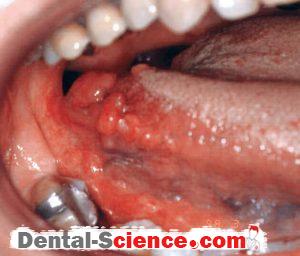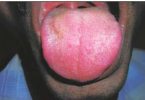Before talking about Foliate Papillitis, we need to understand what is papillae?
The tongue is a muscular organ that responsible for taste sensation. It contains numerous small projections called “papillae” covered by “Taste Buds”. Taste buds act as receptors for taste elements that are sweet, bitter, salty, sour and spicy. There are four types of papillae differ in their shape, location and histology which are Filiform papillae, Fungiform papillae, Circumvallate papillae, Foliate papillae.
Foliate Papillae:
They appear as elongated folds, leaf-like ridges, present in groups on each side at the back of the tongue. They are located at a high-risk site for oral cancer and as they have high tendency to swell, they may be misdiagnosed as tumors.
Foliate Papillitis:
Papillitis means inflammation of papillae of the tongue.
Foliate Papillitis refers to inflammation of foliate papillae. They appear swollen and red in color.
Incidence: Foliate Papillitis considered as common inflammation.
Clinical Features:
Foliate papillae occasionally become inflamed or irritated, red in color, with associated enlargement and tenderness (pain with pressure). These areas are enlarged, swollen and somewhat lobular with an intact overlying mucosa.
Causes and Aetiology:
It may occur as result of mechanical irritation to the site of papillae, or as result of upper respiratory tract infection. These lead to abnormal growth and increase of lingual tonsils (Reactive hyperplasia of lymphoid tissue in deep crypts of foliate papillae).
Diagnosis:
Diagnosis is done by history (history of mechanical irritation to papillae site or history of upper respiratory tract infection) or by clinical features (inflammation of area, tenderness and color).
Differentiate from carcinoma. If carcinoma is suspected, a biopsy is mandatory.
Macroglossia: Causes, signs & symptoms, Treatment
Treatment:

Foliate papillitis isn’t a serious condition unless tumor is suspected. So reassure the patient as there is nothing to worry about.
Now search and treat the cause. If it occurs as result of mechanical irritation as sharp tooth, just smooth the sharp edges. If it occurs as result of upper respiratory infection, deal with the infection with suitable treatment.






